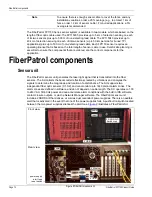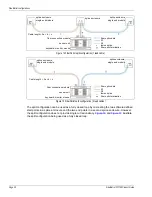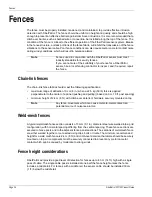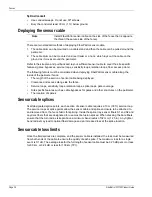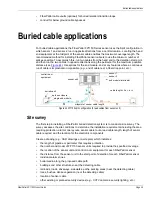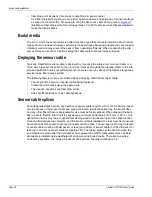
Fences
FiberPatrol FP1150 Product Guide
Page 25
For instances in which a portion of the fence is covered by a climb-over deterrent (i.e., razor
ribbon/concertina) the fence height should be based on the uncovered portion of the fence. For
example, a 5 m (16 ft.) fence with a 90 cm (3 ft.) coil of concertina wire covering the top section of
the fence should be considered a 4.1 m (13.5 ft.) fence. The concertina wire must be securely
attached to the fence to prevent any metal on metal contact resulting from environmental
conditions.
Climb-over deterrent hardware
Barbed wire
Climb-over deterrent hardware is strongly recommended on perimeter fences under the following
conditions. Barbed wire outriggers must be secure to prevent movement due to environmental
conditions. Each barbed wire strand should be taut and tightly secured at each outrigger. The
outriggers or extension arms attached to post tops should have a tight press-fit/set-screw or be
spot-welded. Remove or fasten any loose material.
It is possible to install FiberPatrol sensor cable on barbed wire, but extra precautions must be
taken to avoid damage to the sensor cable. Run the sensor cable along the fence and loop the
cable up beside the fence posts. Secure the sensor cable to the barbed wire so that the cable
avoids contact with the barbs. Secure the cable where it crosses each outrigger. Run the cable
past the outrigger and then back down to the half way height of the fence.
Figure 22
shows the
recommended method for installing sensor cable on barbed wire.
Note
Contact Senstar Customer Service for information about using the
FiberPatrol sensor on fences that are greater than 4.3 m (14 ft.) high.
Figure 21 Recommended fence height/cable pass configurations
fences < 4.3 m (14 ft.)
fences with middle rails
30 cm


